<Music: Performance by Quintigre from the sixth movement.>
Welcome! I’m Terry Ewell. I am the bassoon and music theory professor here at Towson University. I am also the former President of the International Double Reed Society and in addition I freelance in the Baltimore area.
First I am going to address some issues for all quintet players in the fifth movement, Jousts on the arc. Then I will touch on a few issues for just the bassoonist.
For the most part this movement consists of two measure gestures. But I think it is important that you link the two measures together so that you get longer phrase groupings. For instance, you consider the first two measures to be the antecedent that then moves on to the consequent. Here is a visual representation of how the dynamics might work. Notice there is less diminuendo in m. 2 and the highest goal of the first four measures is on the downbeat of m. 4.

<Music: opening of the fifth movement>
The dynamics present very important aspects of the form of this movement. For instance, in measure 9 the mezzo piano signals the start of the B section.
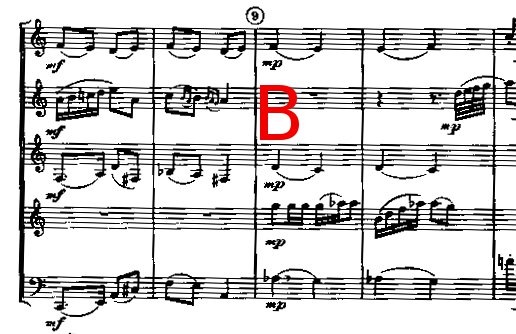
This whole section should be noticeably quieter than the opening section. In m. 15 we have a false recapitulation, a return to the opening that is not a true repetition. It is important that this remain in the quieter dynamic, mezzo piano, so that when the true recapitulation or true return of the opening A section comes in m. 18 the audience clearly understands it is there.
False Recapitultation: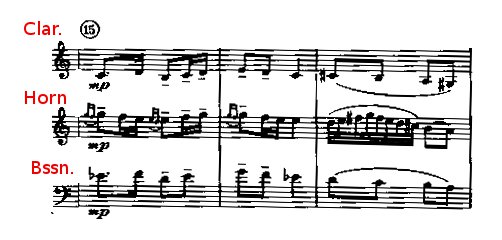
Recapitulation:
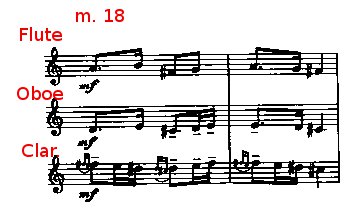
The movement is a miniature, a little gem of an “A B A” form. Be sure that you communicate this to your audience.
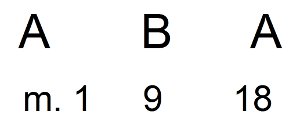
<Music: False and real recapitulations>
I chose this movement from the Milhaud quintet because it emphasizes important aspects of articulation. So let me briefly talk about articulation. In the opening in the horn and bassoon parts the tonguing is much more legato. This is in contrast to the staccatissimo markings in measure 3 and the staccato markings in measure 11.
More legato:

Staccatissimo:

Staccato:

The lengths of notes are determined by how long the tongue is off of the reed. That is, how long the reed is allowed to vibrate. The longer the reed vibrates the longer the length of the note. Therefore if you want to make staccato notes, the tongue is on the reed much longer than perhaps it is off the reed. The quality of the articulation, that is the start and stopping of notes, is determined by the speed of the tongue. A more rapid tongue movement (releasing the notes) will create more articulation, more harshness to the start of the note. Less rapid articulation will great a more legato or a more quiet release of the note. For instance, if you want to make more of a legato tonguing of the note use the “L” sound. “ La La La …” I you want to make more of an explosive release, then use the “T” sound. This is more of a quick tongue movement.
Now in the opening I want to blend with the Horn. Therefore I have to temper my releases. I have to use more of the “L” or slower release in order to blend with the horn. It is very easy on the bassoon to have very fast and quick releases and stops to the notes. We need to match, however, the instruments we are playing with.
Let’s address breath support through articulated notes. The breath support should be the same as slurred notes. For example, let me play in measure 11. First I will play it slurred.
<example: slurred>
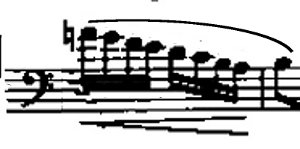
I think that you can hear how I am phrasing with the air. The air is pushing through the notes. I want to keep the air the same and the embouchure the same. This time I will only change how long the tongue is on the reed. Here I will create some staccato notes.
<example: staccato>

Avoid excessive jaw movement, don’t change the air with each note. Use the air to shape the phrase. Use that for your dynamic inflections. The lengths of the notes again are determined by the tongue and the type of enunciation of the notes is determined by how fast the tongue releases.
Last of all on the bassoon for clarity of notes you will need to use the flick keys. So please see some of my other videos about how to flick.
(For instruction on the tongued scale in m. 11 see BDP #121, starting at 2:30: http://youtu.be/9iXm8xSHqck)
Thank you for viewing this video. If you want to know more information about Towson University please visit our website. Thank you so much. Bye.
<Music: Performance by Quintigre from the sixth movement.>
